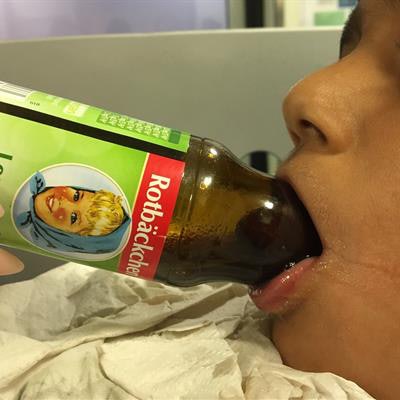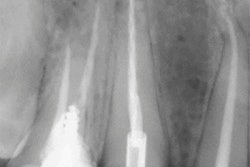
Clinicians removed a glass bottle stuck to a 7-year-old boy's tongue by injecting air into it, which was a technique inspired by the doctor's unconventional method of opening a wine bottle, according to a case report published as a letter in the December issue of the European Journal of Anaesthesiology.
Using this unusual technique allowed the doctors to avoid more complex techniques involving general anesthesia and physically cutting the bottle off the boy's tongue, according to the European Society of Anaesthesiology, which publishes the journal.
"The idea to attempt to inject air into the bottle to produce positive pressure was inspired by my personal recollection of successfully uncorking a wine bottle while working as an anesthetic registrar, with the use of a syringe-and-cannula technique on an occasion when no corkscrew was available," said Christoph Eich, MD, PhD, of the department of anesthesia, pediatric intensive care, and emergency medicine at Auf der Bult Children's Hospital in Hannover, Germany, in a news release.
Rare but happens
Patients who get their tongues stuck in bottles are uncommon, but when these emergencies occur, they usually involve younger children. Children often don't know that strangulation of the tongue causes accumulation of fluid, restriction of blood flow, capillary damage, and pain, all of which may put their upper airways and breathing at risk.
In these cases, clinicians have reported managing these situations with local anesthesia, systemic pain relief, or sedation. Others have also used general anesthesia and endoscopic intubation to free entrapped tongues. Also, doctors have tried to use generous amounts of lubrication and a rotation technique to remove bottles, but most are met with little success. In most cases, bottles must be physically cut off the patients.
In this case, a 7-year-old boy from Hanover was brought to the hospital after his tongue became trapped while trying to lick the last drops of juice from a container. When the boy arrived, he was upset and drooling, but his airway was open and he showed no signs of shortness of breath (Eur J Anaesthesiol, December 2019, Vol. 36:12, pp. 976-978).
 A 7-year-old boy's tongue stuck inside a glass bottle. Images courtesy of the European Society of Anaesthesiology.
A 7-year-old boy's tongue stuck inside a glass bottle. Images courtesy of the European Society of Anaesthesiology.At first, the boy was placed under light intravenous sedation with midazolam and esketamine, and then a thin 70-mm plastic button tube was placed between the tongue and the bottleneck, with the intent of creating a vacuum inside the bottle. This didn't work, according to the doctors.
The tube ended up being connected to a combination of IV extension tubing and a 20-mL syringe. Doctors injected air into the bottle. After it reached 60 mL of air, the boy's swollen, discolored tongue squeezed out of the bottleneck.
The boy was given prednisolone and ibuprofen to reduce swelling. He then was admitted to a pediatric surgical ward for a 24-hour observation period. The swelling had largely dissipated at the time of his discharge.
For about three days, the front part of his tongue remained very discolored. The boy fully recovered within 14 days of the bottle removal.
 After removal of the bottle with positive pressure, the boy's tongue remained discolored for a few days but fully recovered within 14 days.
After removal of the bottle with positive pressure, the boy's tongue remained discolored for a few days but fully recovered within 14 days.A technique worth trying
Dr. Eich said he was aware of just one other report of a positive pressure technique being used successfully on a patient, but that was published about 30 years ago. He encourages clinicians to try this technique before moving further with more invasive procedures.
"Use of positive pressure proved to be a simple, effective, and safe technique for releasing a tongue entrapped in a bottle," he said.




















